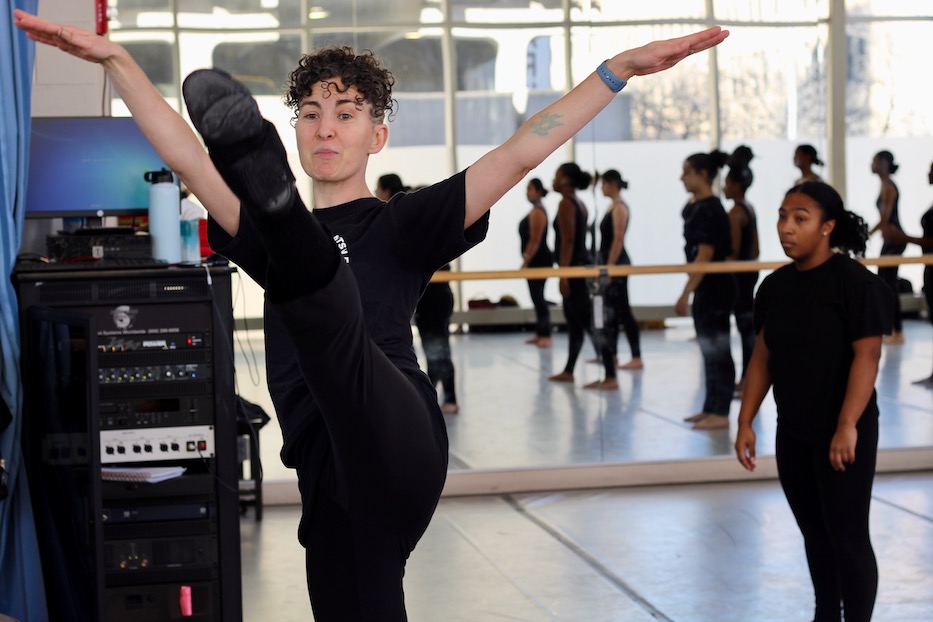
Co-Op High School | Culture & Community | Dance | Education & Youth | Arts & Culture | Arts & Anti-racism
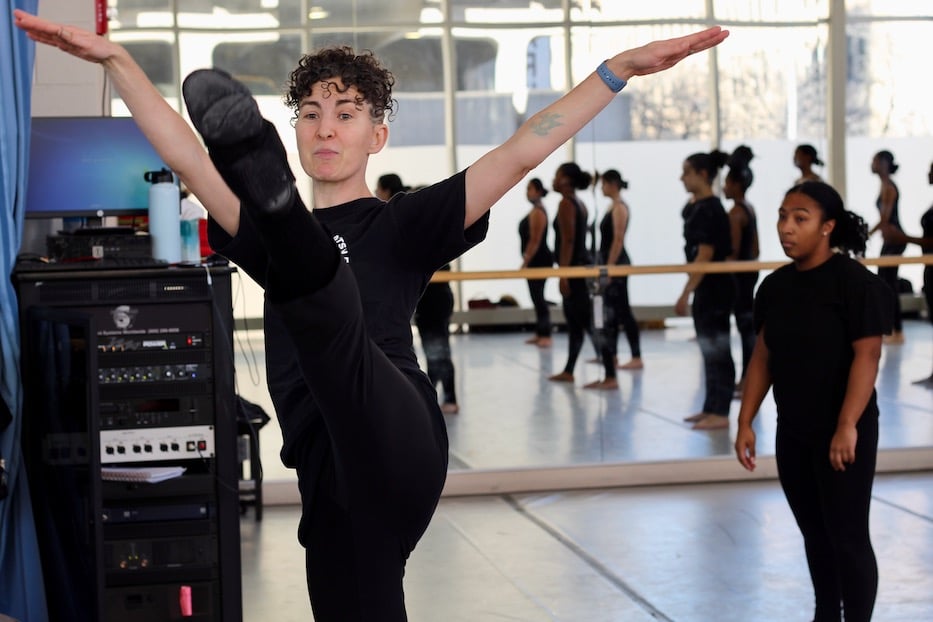
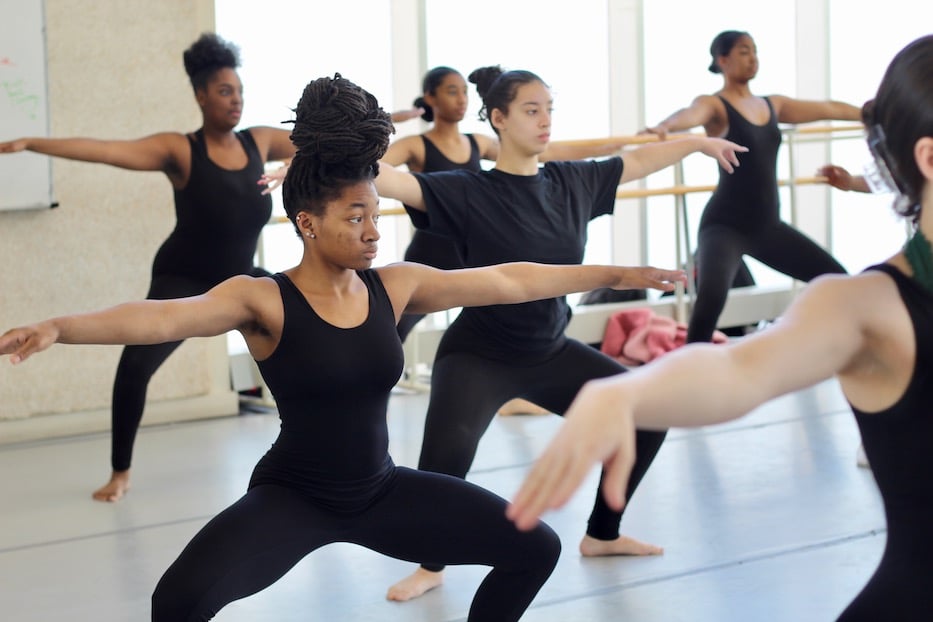
Bauer: Arts educators lead the way. Lucy Gellman Photos.
Lindsey Bauer scanned a dozen eager faces, waiting for the beat to drop. Arms stretched out to the sides. Feet hugged the floor, studying its well-worn contours. Over a speaker, a playlist boomed to life. What is love/If it’s not with you? Janelle Monáe crooned. The room became a sea of black leggings and leotards, joints unlocking as students made their way across the floor. I know when you're alone you feel it too!
“Arms!” Bauer cried, bursting into a smile as Jayla Anderson and Sanbria Pettway lifted their arms toward the ceiling and let them slice through the still air. Sun streamed through the street-facing windows. “I gave you four counts with arms and I want to see you make a choice with them!”
It’s part of the way Bauer, one third of the dance department at Cooperative Arts & Humanities High School and co-founder of the Elm City Dance Collective, is working to weave social and emotional learning into every moment of her classes. This year, she will be doing it as one of 17 dance teachers across the country in the Connected Arts Networks (CAN), a five-year, $8.5 million grant-funded initiative from the U.S. Department of Education.
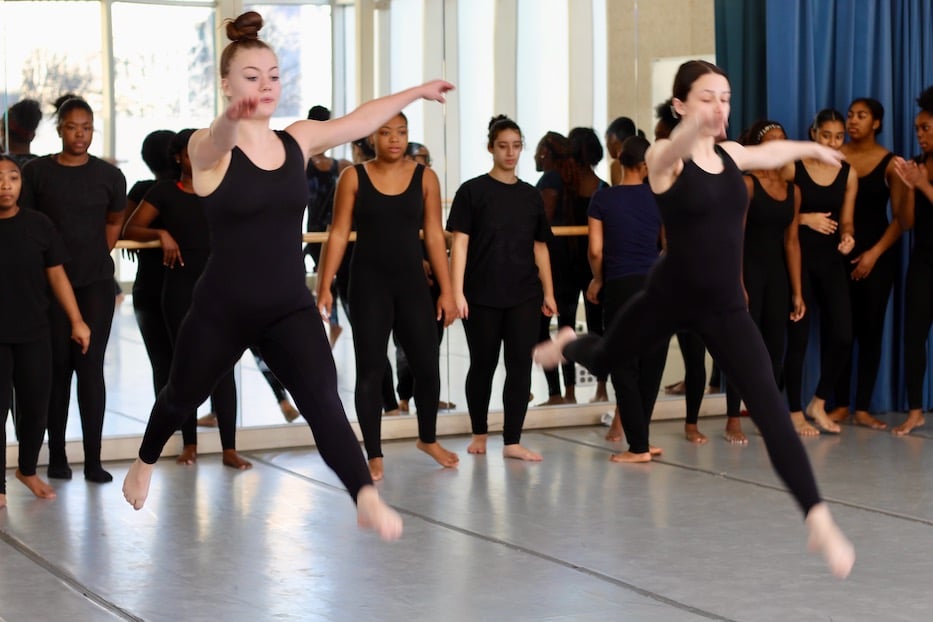
CAN is a collaboration among the National Art Education Association (NAEA), National Association for Music Education (NAfME), Educational Theatre Association (EdTA), and National Dance Education Organization (NDEO). Overall, it invites 70 educators to build Professional Learning Communities, or PLCs, in their own cities, towns, regions, and states.
Over five years, it seeks to make social-emotional learning (SEL) and diversity, equity, and inclusion (DEI) efforts a normal and expected part of arts education, and public education more broadly. Bauer is the only dance educator from Connecticut in the program.
“As arts teachers, we believe that SEL and DEI [work] is best led by artists,” she said in an interview between classes last Friday. “When Covid happened, we looked to the artists … Art is the heartbeat of culture and who we are as people, as humanity. We can’t wait for publishing companies to come out with a curriculum.”
“You Are The Driver”
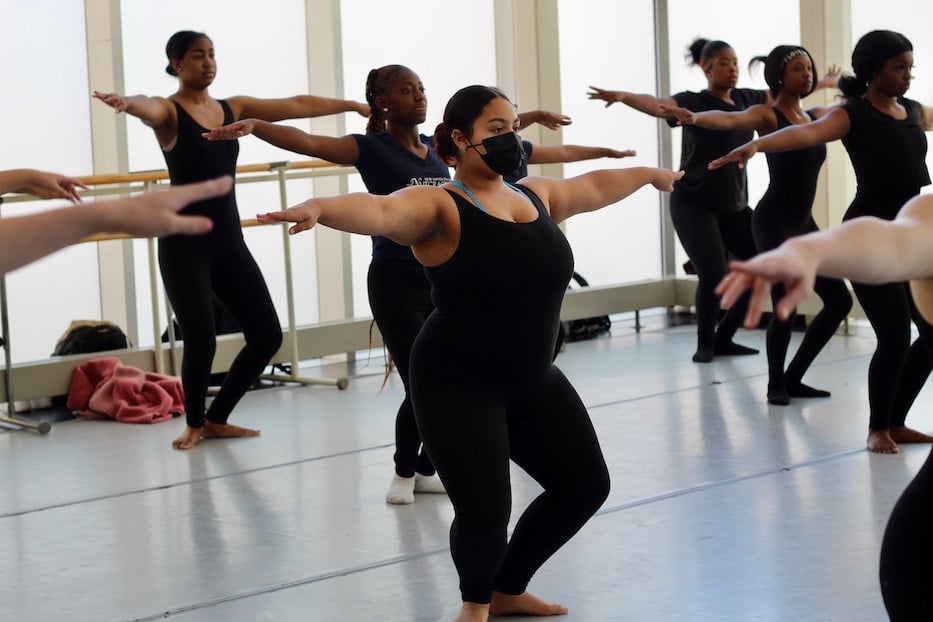 Last Friday morning, those skills were on full display as nearly two dozen juniors streamed into Co-Op’s dance studio, a bright, second-floor space that looks out onto the corner of College and Crown Streets. Below, cars coasted down College Street, unaware. Pedestrian signals chirped and whistled. Back in the classroom, dancers spread out across the floor in rows. Bauer took a spot at the front, and looked around. A playlist that students had weighed in on waited to crackle to life.
Last Friday morning, those skills were on full display as nearly two dozen juniors streamed into Co-Op’s dance studio, a bright, second-floor space that looks out onto the corner of College and Crown Streets. Below, cars coasted down College Street, unaware. Pedestrian signals chirped and whistled. Back in the classroom, dancers spread out across the floor in rows. Bauer took a spot at the front, and looked around. A playlist that students had weighed in on waited to crackle to life.
“How’s your mood today?” she asked.
A few students cocked their heads from side to side, extending their arms slowly as they chewed the question over. In the front row, three or four thumbs bent to the side, in a wordless shorthand for “just okay.” Others gave an instant thumbs up. In the front, Olivia Giglietti took a moment, then tilted her thumb straight down toward the floor. Far behind her, a framed poster honoring dancer Camryn “Mooka” Gayle looked over the room.
Bauer took it all, absorbing the way each body in the room held itself. She asked students to think of the members of the class who weren’t feeling it.
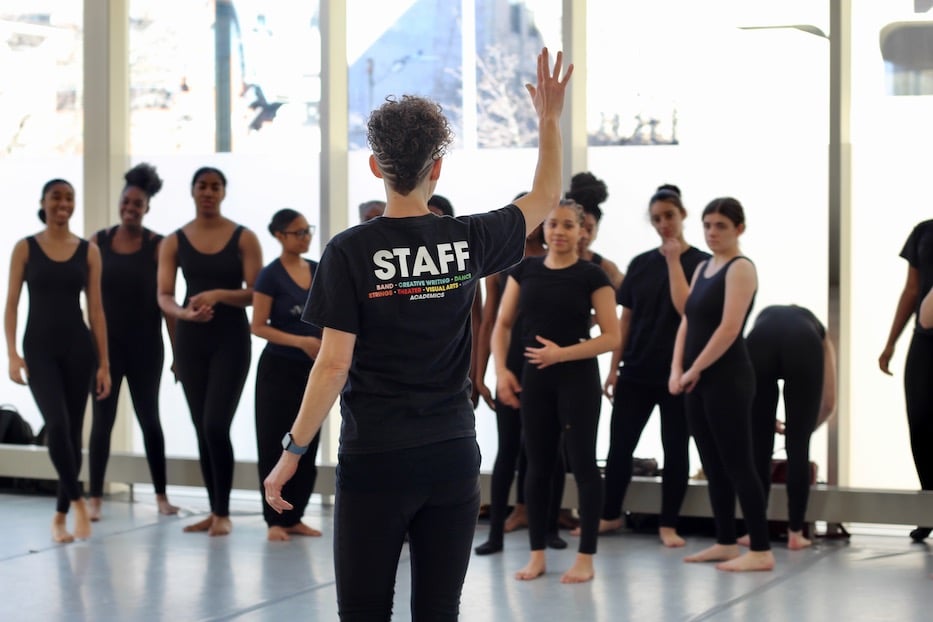
“I want you to dance for them today,” she said. “I want us to think about something good from the past week. I want you to take that and use it.”
There was a beat as students relaxed their arms at their sides and waited. “Okay, let’s work like Rhianna,” she said with a smile. A few of them hummed the first bars to the song and worked their shoulders up and down.
She spread her feet wide, starting to stretch as En Vogue’s “Hold On To Your Love” floated over the room. On cue, over a dozen pairs of feet began to tap the floor. Students eased into the music, and rolled down, arms caressing knees and ankles. Legs stretched back and found their footing. Somewhere between down dog and plank, students started to loosen up.
Bauer, who has two sections of juniors a week and gets them together on Fridays, later said that every aspect of the class—from those first stretches to the last burst of new choreography—informs how she’s going to teach for the day. Students aren't just warming up their bodies: they're letting her know how they feel.
For her, it's second nature. In 2012, she co-created the school’s dance curriculum with teachers Stephen Hankey and Christine Kershaw, both veterans of the field (Hankey is a founding member of the National Dance Theatre Company of Trinidad and Tobago and Kershaw has trained at Alvin Ailey American Dance Theater). All three have struck a balance between focusing on technique and encouraging students to tap into their humanity through the form.
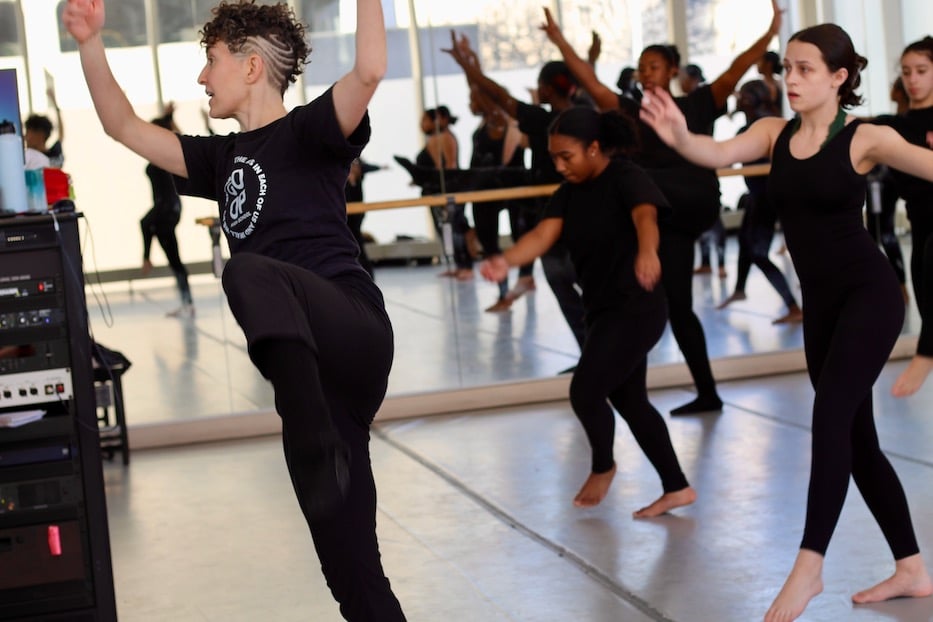
When the pandemic forced schools online in 2020, Bauer’s check-ins with her students often dictated how the rest of the class would go. During a Zoom interview in 2021, she recalled how a whole lesson might change based on something that had happened in a student’s class or on social media earlier in the day. “We spend most of the class period speaking with our bodies, and not with our voices,” she said at the time.
The difference, of course, was that students seemed so far away, dancing in their kitchens, living rooms, and bedrooms. When they returned in August 2021, “there was no way I was gonna teach from a book,” she said.
Her freshmen had missed out on the bulk of in-person middle school. Her sophomores had spent their freshman year online. Her seniors hadn’t been in the building since freshman year. She and Hankey agreed that there was no manual for how to teach students who had just survived two years of extreme social and emotional isolation, and sometimes the loss of friends and family members.
Instead, she focused on the basics, a technique she has also brought to works like Trans Body with Elm City Dance Collective and the New Haven Pride Center. She asked them what they needed, and figured out a way to integrate it into movement. “We believe that you can learn anything in a dance classroom,” she said Friday—including sharing space, responding to and taking care of their bodies, and managing time.
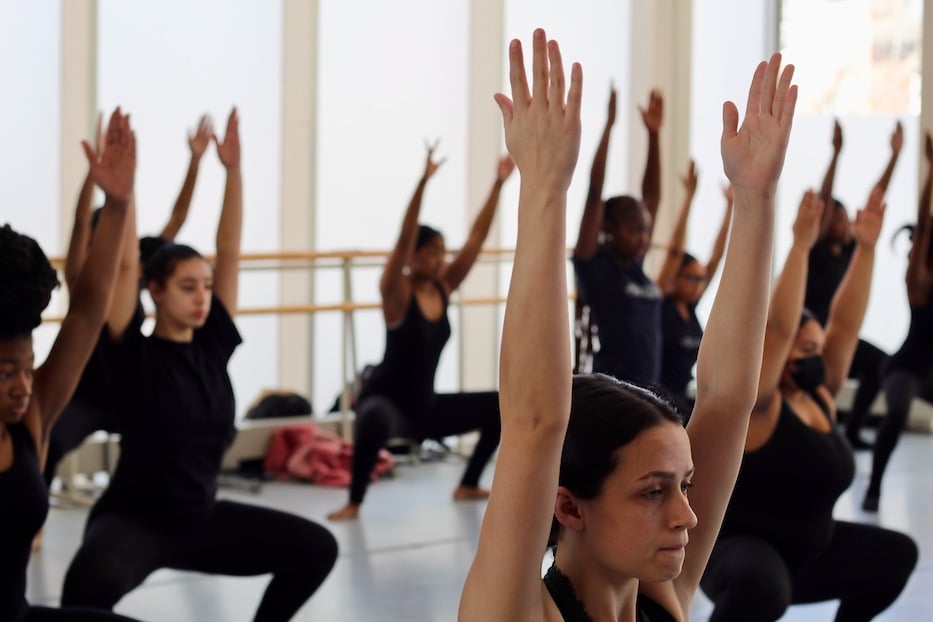
In return, “we can learn to be better teachers” by taking cues from students, she said. “How are we accessing our kids? What are we looking at? Who is teaching them? What is the world teaching them? And how does that inform the way they see themselves?”
Last Friday, that looked like improvisation. As Missy Elliott’s “Family Affair” filled the room, Bauer encouraged students to cross the floor at their own pace, moving in a way that felt right for them. At the front, Olivia Lenihan raised her left arm, running it down the back of her head with a smile. One row behind her, Jayla Anderson extended her arms and lifted one foot gingerly off the floor.
“I want you to think about what’s most important for dance,” Bauer said as students crossed back, and gathered in a knot of lycra and spandex by the windows. There was a beat. “I want you to have fun!” Another beat. “You need confidence to have fun! You need safety to have fun. We need to create that together.”
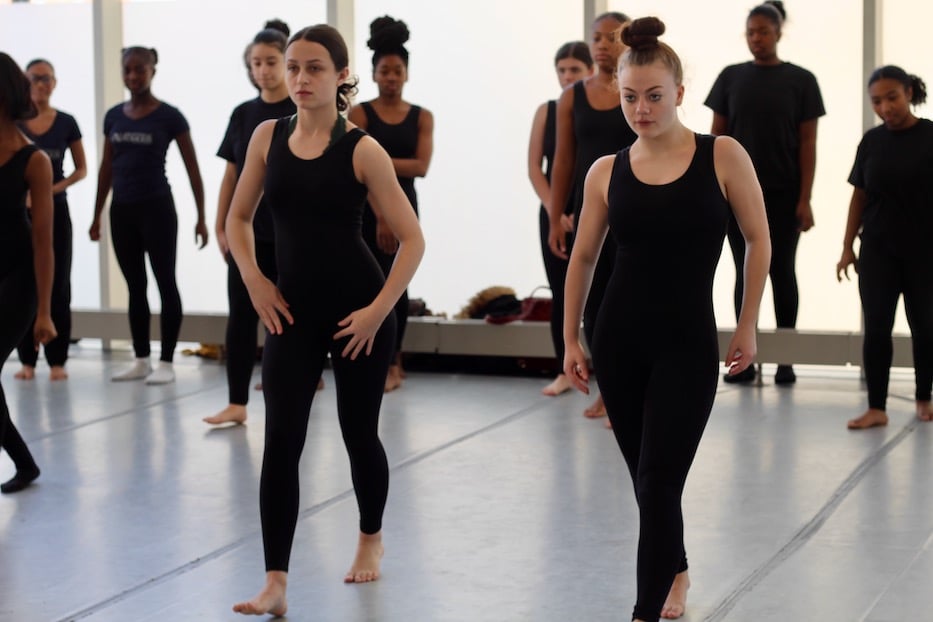
Stromae’s “Alors on danse” coasted over the room, and Bauer had them move into isolated head and hip movement. Lenihan lowered her shoulders, and carefully moved her head to one side, then let it slice through the air to the other. Nearby Gracie Vermiglio froze for a moment, then placed her hands squarely on her hips and moved forward. Bauer encouraged them to take what they knew from learning about jazz tradition and fold it in.
“What can you explore?” she asked (a call to explore cartwheels later drew immediate cheers and applause). “You are the artist. You are the driver.”
It was a sense of agency that flowed through lessons in chassés and barrel turns, as Bauer’s core became pliant, then went airborne, during a demo. Coaching students through each step, she split the class into groups of four as they tried out the movements. As they took flight, she cheered them on, then stepped in to help. They later added the turns to a week’s worth of choreography that had them soaring into the weekend.
“Yes Jayla!” she exclaimed as Anderson mastered the torque and grace of the turn, which asks a dancer to lean back as they are midair, twist just so, and then catch themselves squarely as they land. When Moenaya Grimes paused before stepping right into the turn, Bauer encouraged her to try it. For her, she said, the effort is what she cares about.
“It’s not about getting the steps all the time,” she said as students moved into recent choreography. “That’s not the stress today. The stress today is just getting out there and dancing. I just want to see you dance.”
It’s A Vibe
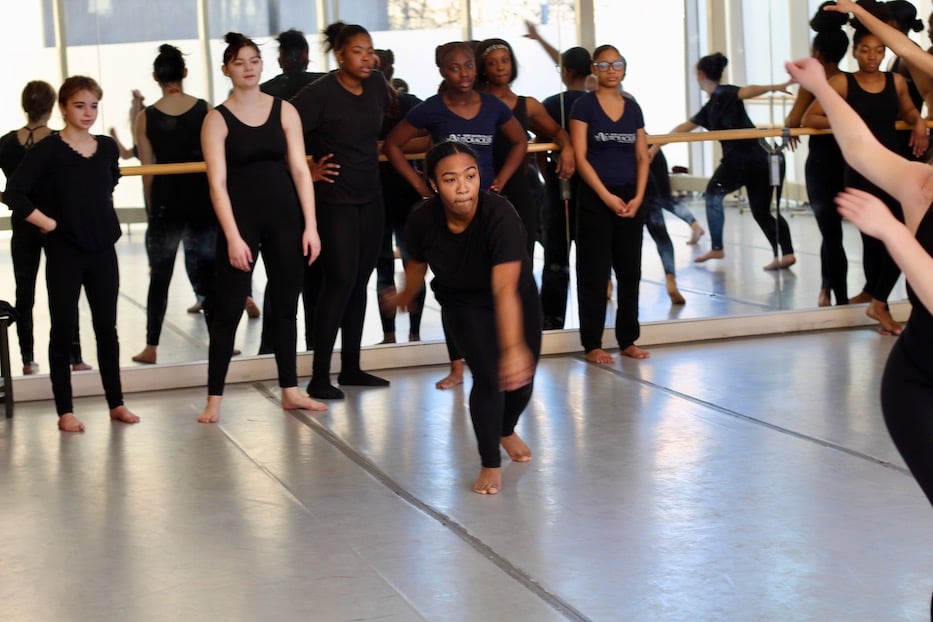
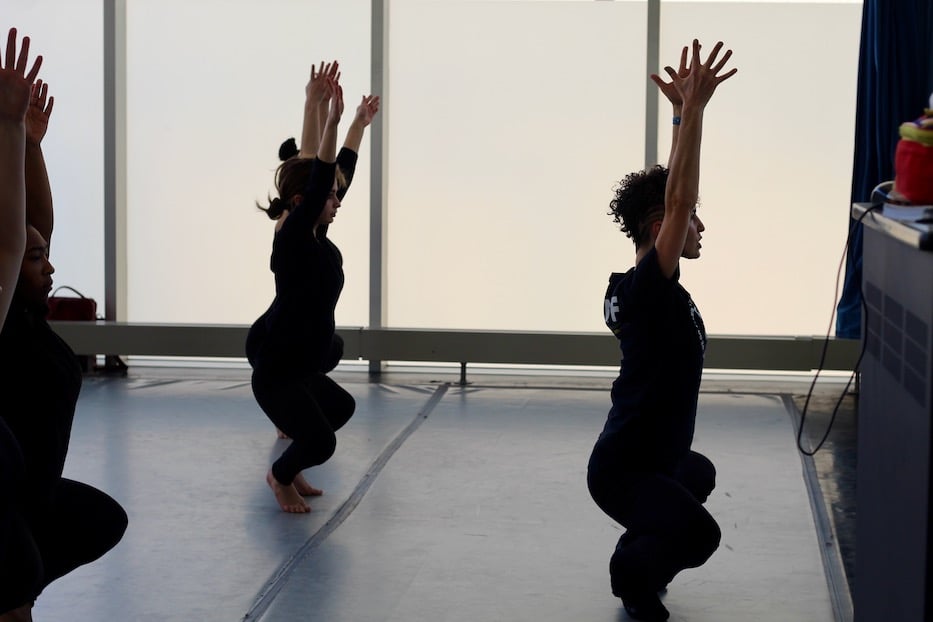
Top: Anderson nails the barrel turn. Bottom: Bauer walks the class through stretching before floor work.
So far, the approach seems to be working. At the end of class, Bauer called students into a circle at the center of the room. Each shouted out the name of a fellow dancer who had inspired them. A few students blushed and beamed as they heard their names; a few went wide-eyed in surprise.
Asked how they were feeling, the words bubbled up from across the circle. Exciting. Ecstatic. Energetic. Enlightened. Lively. Slay.
Before heading to lunch, several of the students praised Bauer’s high energy and sense of flexibility, noting the difference it makes in coming to class each day. Many of the students have been dancing together since they were in middle school at Betsy Ross Arts Magnet School. When Covid-19 hit Connecticut, they spent the final months of eighth grade and almost all of ninth online.
“We've all been dancing with each other for such a long time, so we really like, vibe together and kind of feed off of each other's energy,” Lenihan said. “We went through Covid, through our dance shows getting postponed, so I feel like as a group, that's made us really tight.”
Giglietti, who had entered class Friday in a funk, said she could feel her mood lifting as the music came on and she danced. When asked what had her down, “men” was her one-word answer. A few fellow dancers nodded knowingly.
“I feel like, just being in her class, it brings my mood up no matter what,” she said.
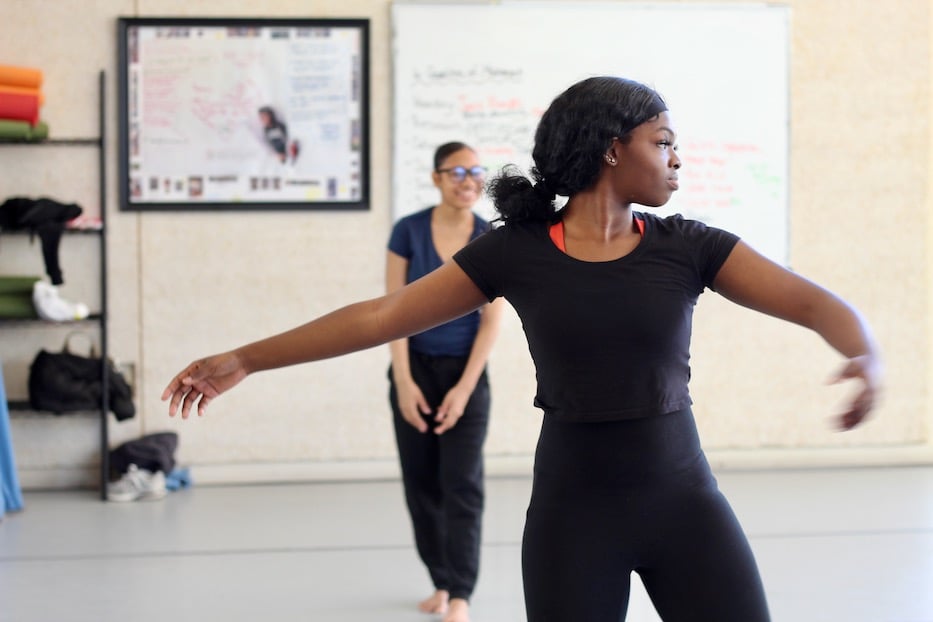 Some of the students are also new to Co-Op, and said that Bauer has helped them get acclimated to a new school. When she transferred to Co-Op from Platt Technical High School at the beginning of her junior year, Grimes didn’t know anyone. She’s grateful for Bauer and for the other juniors studying dance, who have made her feel welcome in a new school.
Some of the students are also new to Co-Op, and said that Bauer has helped them get acclimated to a new school. When she transferred to Co-Op from Platt Technical High School at the beginning of her junior year, Grimes didn’t know anyone. She’s grateful for Bauer and for the other juniors studying dance, who have made her feel welcome in a new school.
“I really did like, bond with these girls,” she said. “I feel like it's a sisterhood, and I do love this class. And I look forward to coming here every day.”
“When I come to this class, I'm stress free,” chimed in Nyla Elliott. “Nothing's on my mind. Cause I know that as soon as I come to this class, it's nothing but good vibes and energy that's up there. Especially Ms. Bauer. If Ms. Bauer's energy is up there, then the whole class' energy is up there."
A CAN-Do Attitude
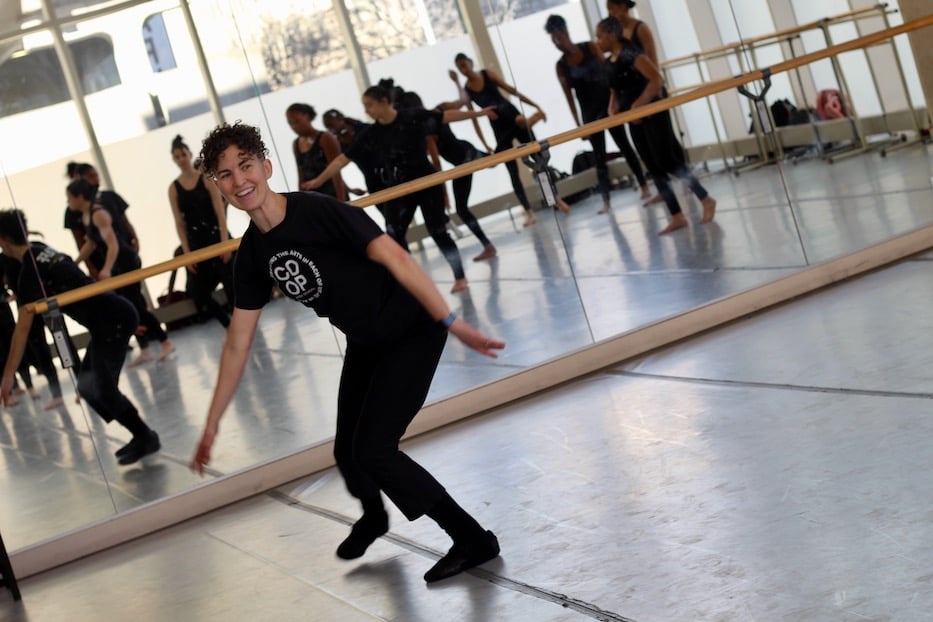
In the next five years, Bauer said, her involvement in CAN will transition from learning and building to the implementation of new professional learning communities in New Haven and Connecticut. Last summer, she began her work with the initiative in a virtual Summer Learning Institute, followed by monthly meetings with the other 16 educators in her cohort and quarterly meetings with the entire network.
Thus far, sessions have been entirely online. Already, she said, she’s valued connecting with educators from across the country, who have given her a sounding board for both new and existing ideas.
“It’s the arts educators that have the charge,” she said. “How are you talking about inclusivity? What are you saying when you’re doing partner work?” What does it look like to question and disrupt the gendered expectations baked into the form?
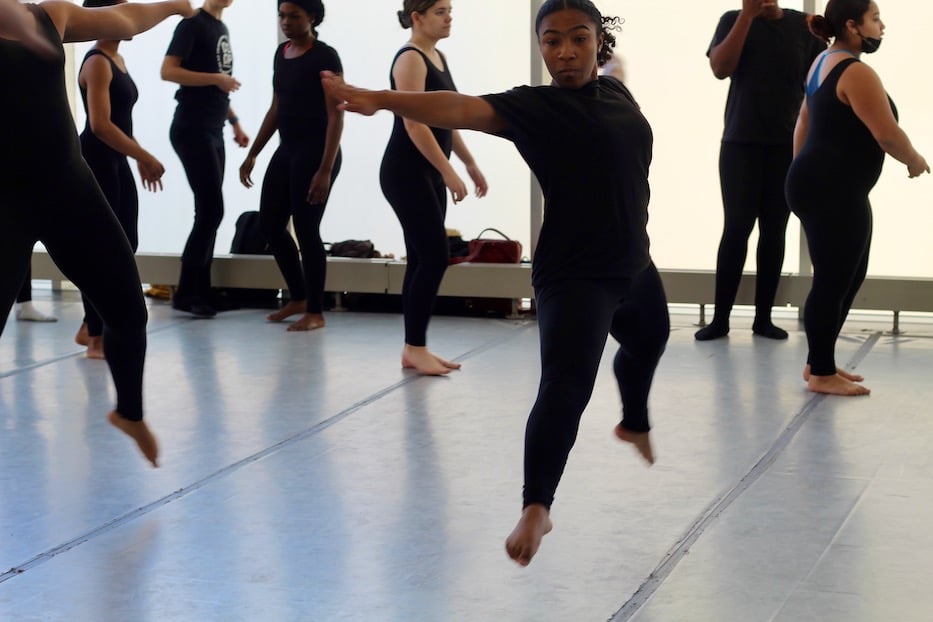
As they continue to meet, she said, cohort members will be drafting action research plans, with the goal of starting PLCs by the fall of this year. As she does, she’s thinking constantly about how to best take care of her students while also teaching them to be in their bodies, and to learn the form .
In many ways, she’s already been doing the work—she just gets a formal framework for it now. Born and raised in Baltimore, Bauer has been dancing for most of her life. She was inspired to become an educator after meeting Barbara Ebaugh, the guidance counselor at her high school. At the time, Bauer said, she was a moody and rebellious teenager, with combat boots and an outsized attitude to match. Ebaugh cut through it all. Now, Bauer wants to be that person for high schoolers.
“She heard me and she saw me, and she saw me all the time,” Bauer said. “I feel like she saved me. It’s important to be heard, and be seen, and to feel safe. I love these crazy kids.”

